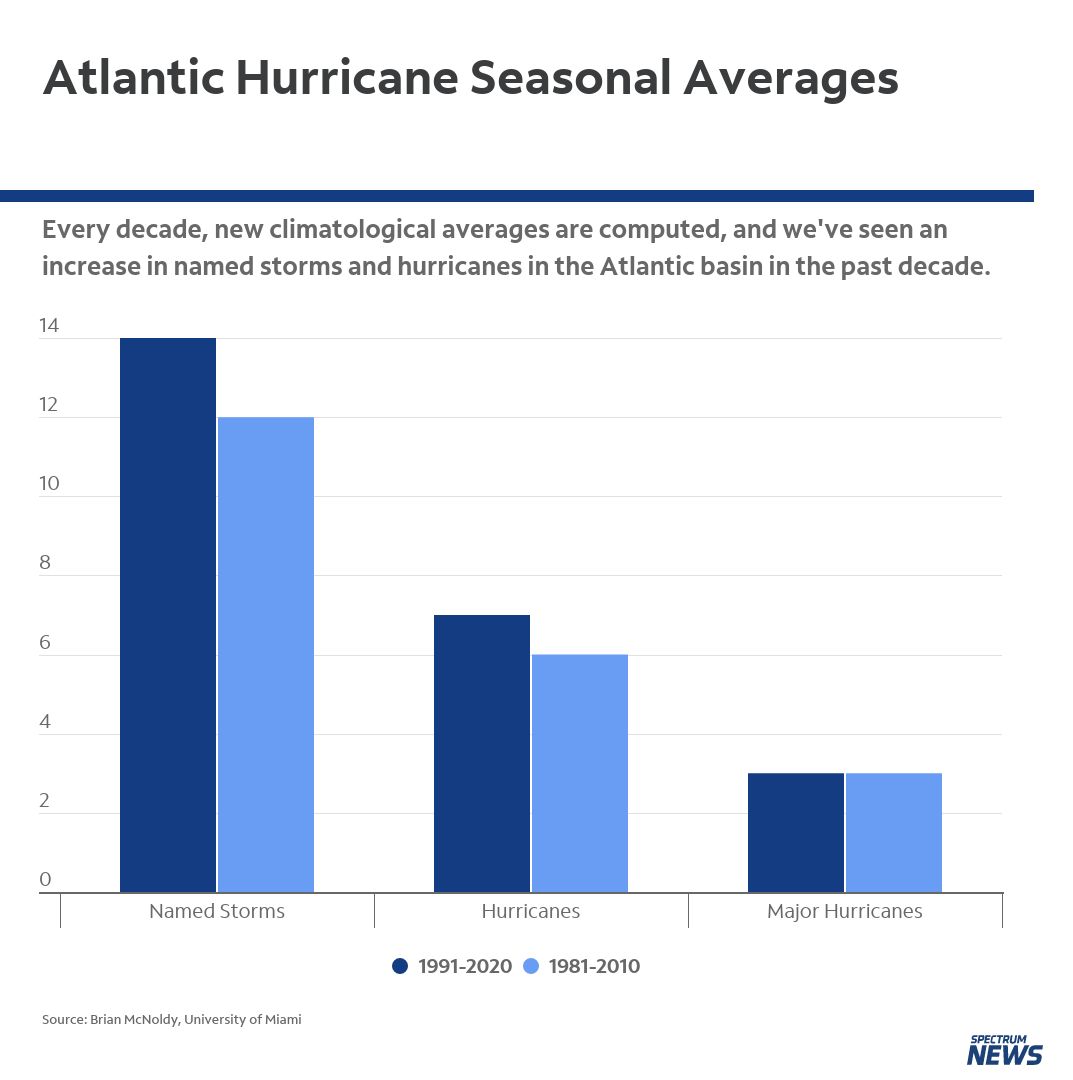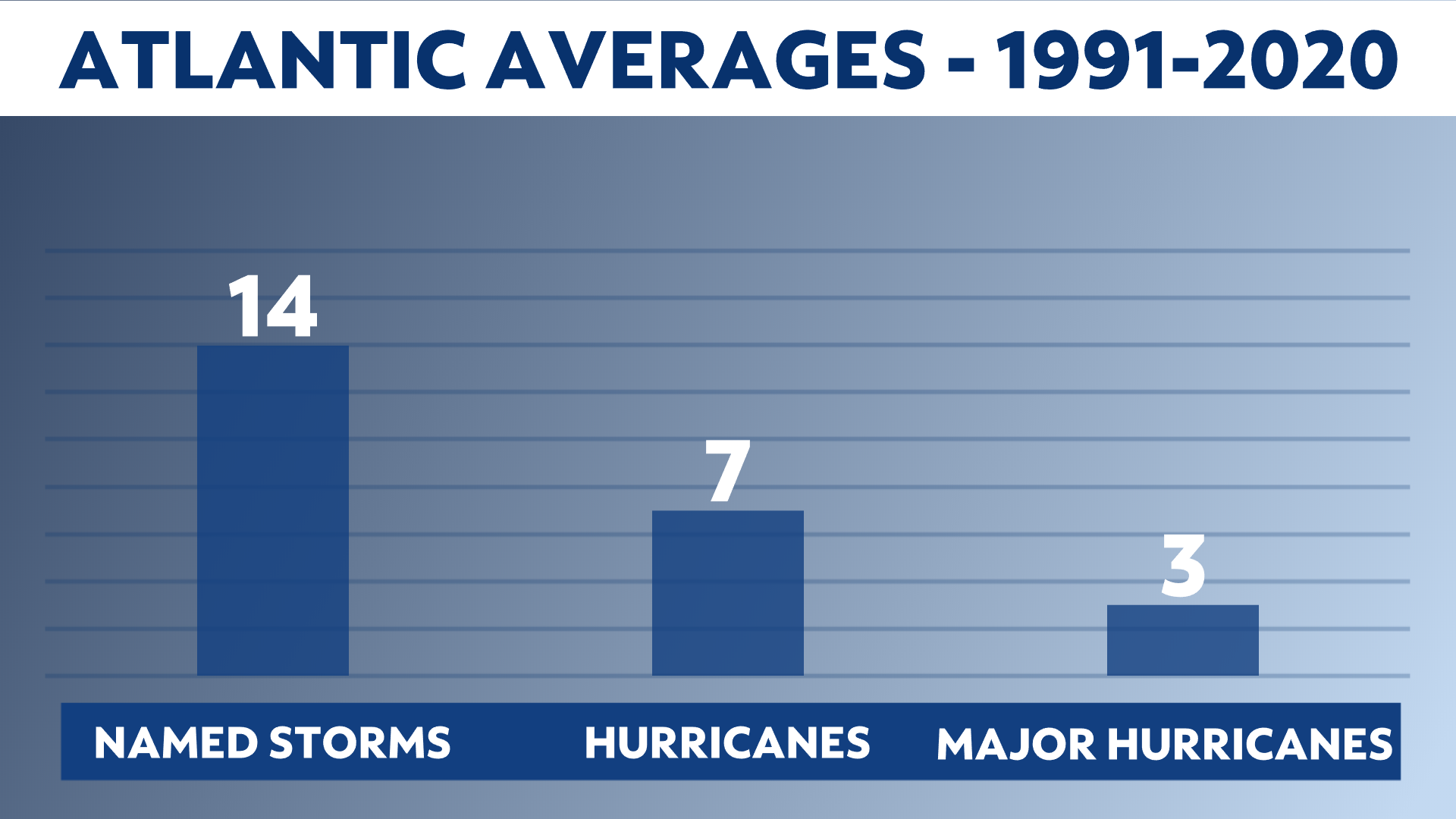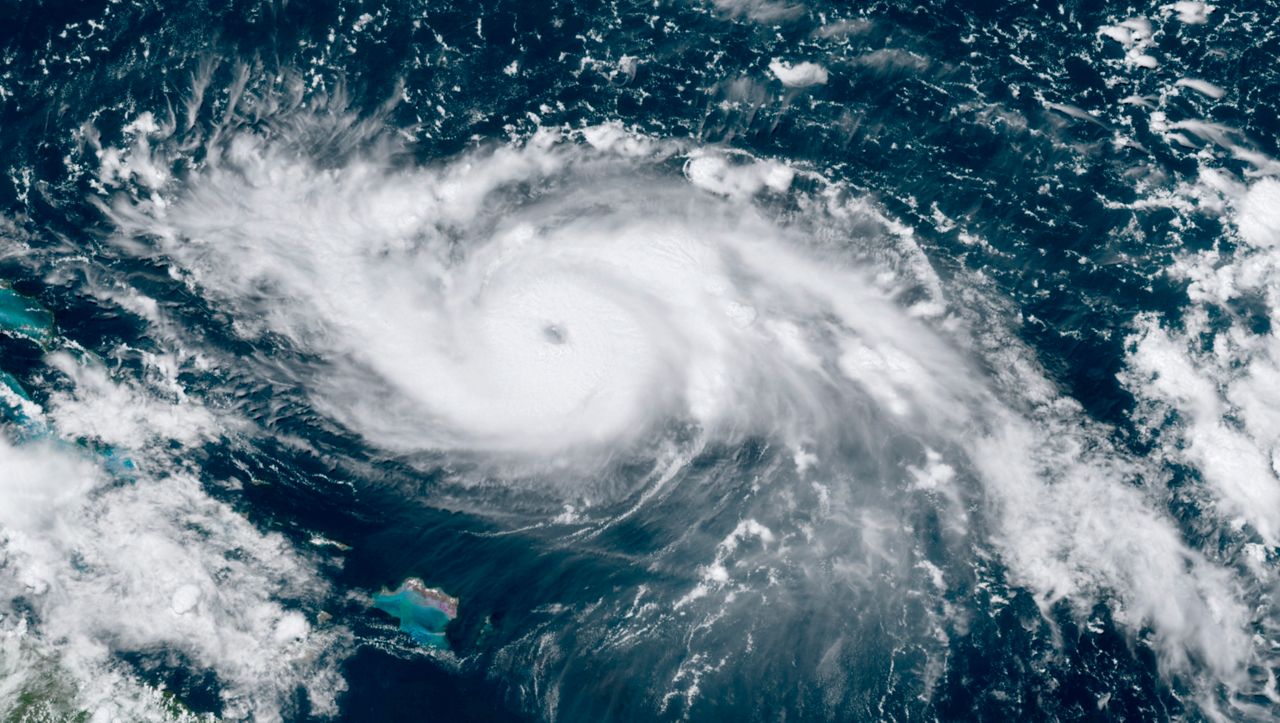The average number of full season named storms in the Atlantic basin will increase this year, largely thanks to a busy decade of tropical activity in the basin.
With the start of a new decade comes a new set of climatological averages.
Climate averages are typically calculated on a 30-year basis, and that includes the official statistics for the National Hurricane Center. After a busy last few years in the tropics, highlighted by a record-setting 2020 year, the Atlantic's average numbers of named storms and hurricanes will increase starting this year.
From 1981-2010, the average number of named storms in the Atlantic basin was 12 (that includes tropical storms and hurricanes) along with six hurricanes.
According to Brian McNoldy, a Senior Research Associate at the University of Miami who focuses on tropical research, the new 1991-2020 numbers will feature a roughly 15% increase.
The new 1991-2020 full season Atlantic averages are now up to 14 named storms and seven hurricanes.

This isn't the first increase of the Atlantic's official full season statistics - far from it.
Since the NHC calculates new averages each decade, these statistics appropriately change every 10 years. Since average seasonal statistics came into play in the 1990s, there's been a clear upward trajectory for named storms and hurricanes, on average, per season.
For example, the 1961-1990 30-year period averaged only 10 named storms, six hurricanes and two major hurricanes each year. Those numbers are now at least 25% higher, based on the most recent 1991-2020 time span.
Some meteorologists believe there are several factors behind that upward trend, but one notable one is the naming of subtropical storms which started in 2002.
"With advances in technology and the naming of sub-tropical storms, the number of named storms has increased," said Spectrum News Chief Meteorologist Mike Clay, based in Tampa. "For example, last year there was a named storm near Portugal. However, there has been no long-term increase in the number of U.S. landfalling hurricanes."
Regardless of the source, recent statistics appear to clearly point to increasing numbers of named storms and hurricanes in the Atlantic basin.
"Officials recognize there has been an increase in tropical activity over the past several years, as well as in the overall 30-year averages period, so it’s not a big surprise to see the annual averages bumped up," said Bryan Karrick, Chief Meteorologist for Spectrum News based in Orlando. "One of the reasons for an uptick in activity is because technological improvements have allowed better detection of tropical activity."
"Climate change has also been a factor," Karrick continued. "As we frequently mention, it’s best not to focus on the numbers because it only takes one storm to create problems for those in the path."

The Atlantic hurricane season runs from June 1-November 30 (though there are discussions about bumping up the start date to May 15 in future years).
Colorado State University's first formal Atlantic season forecast for 2021 comes out on April 8, followed by NOAA's first look in May.



